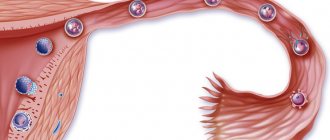Protecting yourself from STDs helps you avoid sexually transmitted diseases.
It should be carried out in advance, even before sexual intercourse.
If for some reason protection against STDs was not used, emergency prevention is possible.
It is carried out after sex.
Let's consider the main means of protection against sexually transmitted infections.
What infections does a condom not protect against?
The condom does not protect against infections, the localization of which may be outside the protection zone of the condom. This:
- Syphilis
- Genital herpes
- Human papillomavirus infection
- Molluscum contagiosum
- Pediculosis pubis
- Scabies
- Tropical STDs (chancroid, donovanosis, lymphagranuloma venereum)
The main purpose of a condom is to protect against unwanted pregnancy - although there is information from the WHO (World Health Organization) that with regular use of condoms throughout the year, 5-8% of couples still become pregnant. A condom may be ineffective if it is not stored correctly in the retail chain. To maintain the integrity of latex, a certain temperature regime and a certain ambient humidity are required. Condoms have an expiration date.
Advice and recommendations from experts
- Have a permanent sexual partner.
- Use condoms for protection.
- Use individual linen, towels, shower accessories.
- Observe hygiene rules.
- Treat dental and oral diseases in a timely manner.
- Strengthen your immune system with healthy eating and exercise.
Chlamydia is a sexually transmitted disease that can be avoided by observing the rules of physical intimacy. And the main rule is to use high-quality condoms.
New data on condom effectiveness
7 years have passed since the publication of the sensational report of four US government agencies (US Agency for International Development, Food and Drug Administration, Center for Disease Control, National Institutes of Health) “Scientific Evidence of the Effectiveness of Condom Use in Preventing STDs.” During this period, many studies were conducted on this problem. From them we can draw several short conclusions, both joyful and sad. Compared to the 2000 working group report, there is evidence that condoms are less effective against HIV infection.
Data on the full effectiveness of condoms for gonococcal infection are not confirmed. Likewise, the report does not confirm the full effectiveness of condoms in protecting against chlamydial infection.
But there have been reports of the effectiveness of condoms in preventing infection with genital herpes and human papillomavirus infection in women.
The risk of infection when using a condom during anal sex is higher than when using vaginal sex.
There is no evidence that condoms are completely effective in preventing genital mycoplasma infections.
The choice of condom does not determine its effectiveness.
Reviews
I studied in detail the issue of protecting against HIV using a condom. WHO conducts research mainly in Africa and Asia. In some countries they tried to teach the population to constantly use condoms, while in others they additionally tried to explain to people the need for sexual contact with only one partner. The second approach turned out to be more effective.
No one is safe from accidental infection. But in my opinion, the best way to protect yourself from STDs is to be faithful to one person. Statistics show that most often the infection affects people who have sexual contact with several partners.
A condom cannot provide 100% protection against all types of STDs. But regular use of it significantly reduces the risk of infection with most of them. One of the important advantages of this type of contraception is a high degree of protection against such a deadly virus as HIV. That is why WHO considers condoms as the main means of preventing the spread of AIDS.
The effectiveness of condoms for gonococcal and chlamydial infections
Lee Warner, Daniel R. Newman (2004) with a known source of infection provide data that with constant use of a condom, infection with gonorrhea and chlamydia occurs in 30.3%, with a non-constant use in 42.7%, with an unknown source of infection in 23.8% and 25.2%, respectively. The same authors (2007) report that in 16.2%, infection with gonorrhea and chlamydia occurs without reasons such as late putting on of a condom, rupture of the condom, earlier removal of the condom or its slippage.
LM Niccolai, A Rowhani-Rahbar, H Jenkins, S Green and DW Dunne (2005) provide data that infection with chlamydial infection with a known source of infection with constant use of a condom occurs in 13.3%, with inconsistent use in 34.4%. With an unknown source of infection, infection occurs in 10.3% and 8.7% of cases, respectively.
Richard A. Crosby, PhD, Ralph J. DiClemente (2003) found that among adolescent girls reporting consistent (100%) condom use, 17.8% tested positive for chlamydia, gonorrhea, and trichomoniasis versus 30.0% tested positive for these infections in girls. who reported inconsistent condom use by their sexual partners.
Hocking J, Fairley CK. (2006) reported that with consistent condom use, chlamydial infection during anal sex occurred in 8.6% of homosexual men versus 6.8% of heterosexual men.
How can STDs become infected and what are their dangers?
STDs include illnesses caused by infections that are transmitted from person to person mainly through sexual contact:
- vaginal;
- anal;
- oral.
Most often, infection occurs during the first two methods of sex. The highest risk of infection is through blood, semen, cervical fluid in the cervix, and genital secretions. During oral sex, STDs can be transmitted through open wounds in the mouth. In some cases, infection occurs through direct contact of the skin in the pubic area affected by rashes, ulcers, and pustules. There is a chance of contracting an STD through household or vertical means, when the infection is transmitted from a pregnant woman to the fetus.
Scientists can recognize more than three dozen types of infections transmitted through sexual contact. The causative agents may be:
- bacteria;
- viruses;
- fungal;
- parasites.
According to statistics, the highest incidence is associated with the following STDs:
- chlamydia;
- syphilis;
- gonorrhea;
- trichomoniasis;
- Hepatitis B;
- herpes type 2;
- HIV;
- papillomavirus.
The last four STDs are caused by viruses and are considered incurable. With the help of appropriate therapy, you can only reduce their manifestations and the likelihood of negative consequences.
STDs are a serious health hazard because they primarily impair the functioning of the reproductive organs and can lead to infertility. If the disease becomes chronic, the infection can affect:
- brain and spinal cord;
- internal organs;
- musculoskeletal system;
- immune system.
Every year, more than 160 million people become infected with trichomoniasis, more than 80 million with chlamydia, more than 60 million with gonorrhea
The effectiveness of condoms against human papillomavirus infection
Rachel L. Winer, Ph.D., James P. Hughes, (2006) report that infection of women with human papillomavirus infection with constant use of condoms by their partners occurred in 37.8%, and in women whose sexual partners did not use a condom in 89.3%. It is interesting to note that consistent use of condoms by sexual partners of women with CIN 1 for 2 years increased the percentage of CIN regression. Regression of CIN in the group using a condom occurred in 53% versus 35% compared with women whose sexual partners did not use a condom (Cornelis JA Hogewoning Maaike CG Bleeker 2000).
What medications are prescribed to prevent STDs?
To prevent the development of the disease, it is usually enough to take or inject one dose of the drug.
Which one depends on the specific infection.
If a partner has trichomoniasis, then it is necessary to take metronidazole orally or administer it intravenously.
If chlamydia is detected, 1 gram of azithromycin is prescribed.
Prevention of syphilis is carried out with benzylpenicillin preparations.
2 schemes can be used.
- One injection of Retarpen is prescribed at a dose of 2.4 million units.
- A course of preventive treatment with procaine-benzylpenicillin is used.
It is administered at a dose of 1.2 million units every day for 1 week.
If it is necessary to prevent gonorrhea, then 250 mg of ceftriaxone is administered intramuscularly.
In case of possible HIV infection, prophylaxis with antiretroviral drugs is carried out.
The main reasons for the incomplete effectiveness of condoms
Naturally, such significant figures for the ineffectiveness of condoms (for HIV infection up to 20%, gonococcal, chlamydial infections and trichomoniasis up to 30%, for genital herpes up to 70%, for genital mycoplasmas up to 20%), identified in the statistical studies given above, make us think about the possible reasons for this sad phenomenon. Basically, the reasons for the incomplete effectiveness of using condoms to prevent sexually transmitted infections and pregnancy come down to three points:
- Incorrect use of a condom
- Mechanical damage to the condom - rupture and slippage
- Violation of the permeability of the walls (membrane) of the condom for viruses and bacteria
The likelihood of contracting sexually transmitted diseases
Different infections have different contagiousness. The risk of infection during a single sexual intercourse depends on it.
In addition, it is influenced by a number of other factors:
- stage of infection at the time of coitus
- viral or bacterial load
- presence of symptoms
- localization of the inflammatory process
- method of sexual intercourse, its duration, intensity
There are average data showing the risk of infection during a single act. They should not be taken literally. Because in different situations the risk of disease transmission is different. For example, if you have sex for 2 hours in a row with a patient with gonococcal infection, whose penis is literally dripping pus, then the probability of infection approaches 100%.
At the same time, with mild symptoms and quick sex, the risk is minimal. It also matters whether the ejaculate enters the woman’s genital tract. Because some infectious agents are contained in semen (HIV). Others are transferred by sperm into the woman’s genital tract (chlamydia, ureaplasma).
The approximate risk of contracting an STD with one?
Incorrect use of a condom
One of the main reasons for the incomplete effectiveness of condoms, according to many researchers, is its improper use. Warner L, Clay-Warner J, Boles J, Williamson J. (1998) reported that the most common mistakes were incorrectly putting on a condom (with a bag to collect sperm inside) and then changing it during sexual intercourse (13%), putting on a condom during sexual intercourse - 2.6%, removing the condom before the end of sexual intercourse - 1.5%.
Crosby RA, Sanders SA, Yarber WL, Graham CA, Dodge B. (2002), after analyzing errors in the use of male condoms, clarify that in 43% of cases condoms were put on during sexual intercourse, in 15% they were removed before its completion, in 40% during sexual intercourse When a condom was put on, there was no space left for collecting sperm, and in 30% of cases the condom was put on “inside out.”
Sanders SA, Graham CA, Yarber WL, Crosby RA. (2003) studied the question of whether women correctly place a male condom on their sexual partner. It turned out that in 51% of cases women put a condom on their sexual partner during sexual intercourse, in 15% they took it off before completion, in 40% they did not leave a place to collect sperm, and in 30% they put it on “inside out”, in 26% of cases did not use lubricant, and in 15% they lubricated the condom with water.
Warner L, Clay-Warner J, Boles J, Williamson J. (1998) believe that it is the incorrect use of a condom that leads to pregnancy and sexually transmitted infections in 13% of cases of total condom use.
How the disease is transmitted
Can you get thrush through a condom?
Thrush appears as a result of a violation of the vaginal microflora. Most often, it is caused by infrequent sexual intercourse, or too violent sex. A woman feels severe discomfort some time after sex, and discharge appears. Thrush is not transmitted through a condom; it is not transmitted sexually at all. Itching in the intimate area after sex may be a consequence of a latex allergy. Can you get AIDS through a condom? The risk of contracting this dangerous disease when using such a contraceptive is extremely small. Only a condom can protect against AIDS by 90 percent; other methods of contraception are ineffective.
Many sexually transmitted infections can be caught not only through sexual intercourse. There is a risk of infection when visiting a public toilet, shared shower, beauty salon, piercing or tattooing. This is why it is important to use a condom even with a trusted partner.
Many people have a question: is it possible to get an infection through a condom? This is possible in a small percentage of cases, especially if it is used incorrectly. In addition, there are sexually transmitted infections from which it is unable to protect.
Can you get syphilis through a condom? Syphilis is known for the fact that lesions appear not only on the genitals, but also in the pubic area, on the abdomen, on the palms, on the lips, in the oral cavity, and around the anus. Since a condom only protects the genitals, you can become infected with syphilis through close skin-to-skin contact.
Another disease that you can catch even using a condom is genital herpes. It can be located not only in the vagina and on the cervix, but also on the pubis. Herpes is highly contagious. Small blisters appear on the skin, which itch and burn. A high-quality condom reduces the risk of disease, but it cannot be 100 percent effective.
Is it possible to get genital warts through a condom? This is a sexually transmitted virus that more often torments people who do not take care of personal hygiene and have recently had other sexually transmitted infections. Warts in women can appear on the labia minora, near the anus and vaginal opening.
A condom is also useless in case of infection with scabies, pubic lice and molluscum contagiosum. Sites of infection with molluscum contagiosum can be on the neck, abdomen, and thighs. In these cases, only a doctor can help cope with the disease.
There are several ways how pathology can be transmitted. However, most often this happens if a person leads a reckless lifestyle and gets involved with untested sexual partners. During sex without a condom, HIV will definitely pass to the partner. However, sometimes the disease is transmitted even if protective measures have been taken. It cannot be said that condoms protect 100% from HIV, but you can still find a way out.
For representatives of the fair sex, blood and vaginal discharge are considered infected, and for the stronger sex, blood and sperm are considered infected.
The disease can also be transmitted through invasive means. For example, when using the same syringe by several patients at once. You can also pick up the infection in places like dentists, nail salons, and tattoo studios. The disease can spread from a contaminated instrument through a wound into the blood.
There have also been cases where a sperm or blood donor transmitted the virus to the recipient. However, now the likelihood of such a phenomenon is minimal, since the donated liquid undergoes a large number of special studies.
Mechanical damage to the condom
The next most common reason for incomplete effectiveness is mechanical damage to the condom - rupture and slippage. Richters J, Gerofi J, Donovan B. (1995) provide data that condom breakage occurs in 4.9% and slippage in 3.1% of all cases of condom use.
Messiah A, Dart T, Spencer BE, Warszawski J. (1997) report that ruptures occur in 3.4% and slippage in 1.1%. Rosenberg MJ, Waugh MS. (1997) conducted a study of a well-known brand (Durex Ramses) and found that condom rupture was observed in only 0.41%, and slippage in 0.68% of cases of use.
Frezieres RG, Walsh TL, Nelson AL, Clark VA, Coulson AH. (1999) compared the effectiveness of male polyurethane condoms and latex condoms. The study found that the breakage and slippage rates of polyurethane condoms were 8.6% versus 1.6% for latex condoms, although pregnancy rates with consistent condom use were 4.8% for polyurethane condoms and 6.3% for latex condoms.
Macaluso M, Kelaghan J, Artz L, Austin H, Fleenor M, Hook EW 3rd, Valappil T. (2002) in a study of 21,852 condom uses found a breakage rate of 2.3% and slippage rate of 1.9%.
Walsh TL, Frezieres RG, Peacock K, Nelson AL, Clark VA, Bernstein L. (2003) report that non-latex condoms are more likely to break and slip than latex condoms - 4% versus 1.3%. The pregnancy rate with constant use of condoms by monogamous couples was 10.8% for non-latex condoms and 6.4% for latex condoms.
Potter WD, de Villemeur M.2003 provide somewhat opposite data: 0.6% breaks for polyurethane condoms and 1.3% for latex ones, although polyurethane condoms still slip off more often than latex ones 1.1% versus 0.5%.
Valappil T, Kelaghan J, Macaluso M, Artz L, Austin H, Fleenor ME, Robey L, Hook EW 3rd. (2005) compared the breakage and slippage rates of male and female condoms. Breaks of female condoms were observed less frequently than male condoms - 0.1% versus 3.1%, but female condoms slipped off significantly more often than male condoms - 5.6% versus 1.1%.
Crosby RA, Yarber WL, Sanders SA, Graham CA, McBride K, Milhausen RR, Arno JN. (2007) provide data that 31.1% of cases of infection with sexually transmitted infections are associated with mechanical damage to male condoms and (or) its slippage.
Advice and recommendations from experts
To reduce the risk of chlamydia to a minimum, you need to follow the recommendations of experts:
- Have a permanent sexual partner.
- Use condoms for protection.
- Use individual linen, towels, shower accessories.
- Observe hygiene rules.
- Treat dental and oral diseases in a timely manner.
- Strengthen your immune system with healthy eating and exercise.
Chlamydia is a sexually transmitted disease that can be avoided by observing the rules of physical intimacy. And the main rule is to use high-quality condoms.
Common ways to catch chlamydia or become infected with other sexually transmitted infections are extragenital forms of infection. Sex is not the only way for bacteria to spread. The disease progresses if the mucous membranes of the eyes or throat are affected. As a result, a person is diagnosed with chlamydial conjunctivitis or chlamydial pneumonia.
- When kissing, bacteria are transmitted in saliva.
- When you cough, chlamydia with drops of mucus spreads in space and settles in unprotected places of the body (eyes, mouth).
- weakened immune system;
- lack of personal hygiene;
- high concentration of a pathogenic microorganism in a potentially sick person.
Smear with C. trachomatis under a microscope
It is less likely to become infected with chlamydia bacteria through personal contact. What is meant in this case?
- Bacteria enter the mucous membrane of the urinary organ through remaining stains on the bed.
- As a result of sharing a washcloth and towel in the shower.
- If you wear the underwear of an infected person.
- As a result of close contact with infected animals.
Note that the bacteria that cause chlamydia are in an active state outside the environment of the human body. They live for some time on damp cloth or matter. A healthy person, using a damp cloth, then rubs his hands over his eyes or touches his mouth. Thus, the bacteria find a new breeding site.
Violation of the permeability of the walls (membrane) of the condom
This is the most exciting question, since according to various researchers, infection with sexually transmitted infections occurs with proper use and without compromising the integrity of the condom. Accurate statistics are difficult because only patient reports are taken into account without significant objective evidence. Therefore, a number of experimental studies were carried out to determine whether the condom membrane is permeable to viruses and bacteria.
Experimental study of the condom membrane for the penetration of viruses and bacteria in vitro To study the penetration of viruses through the condom membrane, the method proposed by CD Lytle, LB Routson and WH Cyr in 1992 is used. The method is based on the determination of phi chi bacteriophage X174, which has a size of 25 nm (comparable to the size of viruses), the concentration of which was measured in the environment inside and outside the condom after testing the condom in the device proposed by the authors at given parameters simulating sexual intercourse - pressure, temperature, exposure duration.
Voeller B, Nelson J, Day C. (1994) studied several brands of latex condoms. All Protex Contracept Plus brand condoms leaked bacteriophage. Other condoms tested showed bacteriophage leakage ranging from 0.9% to 22.8%. For example, The Ramses Non-Lubricated condoms leaked in 0.9% of cases, Mentor in 4%, and LifeStyles Conture in 6.3% of cases.
Lytle CD, Routson LB, Seaborn GB, Dixon LG, Bushar HF, Cyr WH. (1997) determined significant bacteriophage leakage in 2.6% of latex and polyurethane condoms tested, and found no statistically significant difference between them.
Sierra OE, Gaona de Hernandez MA, Rey GJ. (2005) found leakage of bacteriophage X174 in 4 polyolefin condoms out of 60 and in 1 latex condom out of 20.
Experimental study of the condom membrane for the penetration of viruses and bacteria in vivo However, evidence that the condom membrane is permeable to living microorganisms in the laboratory is not sufficient to state that condoms are ineffective when used directly during sexual intercourse. Therefore, Lawson ML, Maculuso M, Bloom A, Hortin G, Hammond KR, Blackwell R. (1998) after studying three sperm markers: acid phosphatase (AP), prostate-specific antigen (PSA) and human plasma sperm antigen (MHS-5) came up with to the conclusion about the advisability of using PSA to study the barrier functions of the condom. PSA has a molecular weight of 30 kDa, which is comparable to the molecular weight of viruses, and its level in vaginal discharge is incomparably lower than in semen (the low content of PSA in women is associated with the presence of a rudimentary female prostate - the Skene gland). After this discovery, studies appeared showing that the membrane of condoms in some cases is permeable to PSA antigen. During the experiments, the PSA level in the vagina was measured before sexual intercourse (usually 2 days in advance), which was compared with the PSA level after sexual intercourse using a condom.
Walsh TL, Frezieres RG, Nelson AL, Wraxall BG, Clark VA. (1999) found a high level of PSA in postcoital vaginal fluid of 2% after intercourse with an intact condom, a detection rate that increased sharply to 41% when condoms were used with a deliberately single 1 mm puncture.
Walsh TL, Frezieres RG, Peacock K, Nelson AL, Clark VA, Bernstein L, Wraxall BG. 2003 found significant levels of PSA in 17 samples of postcoital vaginal fluid without evidence of semen out of 830 studies. The same authors in 2004 found high levels of PSA in postcoital vaginal fluid in 1.2% of cases when testing three brands of latex condoms with respect to their integrity.
Thus, statistical and experimental studies have proven that condoms are not a means of protection for preventing sexually transmitted infections with complete (100%) effectiveness, but their correct use can significantly reduce the risk of infection.
Using antiseptics to protect against STDs
Substances with an antiseptic effect can be used to prevent STDs after sexual intercourse.
Drugs used:
- Benatex;
- Miramistin;
- chlorhexidine.
Benatex is a contraceptive.
It has not only an antiseptic, but also a sporicidal effect.
That is, it destroys sperm and prevents them from fertilizing the egg.
The drug is effective against many bacteria, fungi, protozoa and inhibits the activity of the herpes simplex virus.
It is used before sexual intercourse.
The remaining drugs are used after it.
They wash the genitals.
Antiseptics are injected into the urethra and vagina.
If you had oral sex, you should rinse your mouth and throat.
If there has been anal contact, it is necessary to insert suppositories, tablets or a solution into the rectum.
The skin of the anogenital zone should also be treated with antiseptics.
All this must be done no later than 2 hours after sex.
Otherwise, the effectiveness of prevention will be low.
How to use a condom correctly
- Condoms should only be purchased from well-known companies (such as Durex)
- It is better to buy at a pharmacy - the storage conditions there are much better than in a kiosk in the sun (a certain temperature and certain humidity conditions are required). You just need to look at the expiration date (if there is less than six months left before its end, it is better not to buy it).
- The condom must be put on immediately before sexual intercourse, leaving a small space for sperm.
- For anal sex, special condoms are required.
- Do not wear two condoms - they will not save you, but due to the friction of the rubber surfaces, the risk of rupture increases.
- It is necessary to remove the condom only after first washing it while it is on with warm (or preferably soapy) water.
Extragenital forms of chlamydia
Common ways to catch chlamydia or become infected with other sexually transmitted infections are extragenital forms of infection. Sex is not the only way for bacteria to spread. The disease progresses if the mucous membranes of the eyes or throat are affected. As a result, a person is diagnosed with chlamydial conjunctivitis or chlamydial pneumonia.
Doctors warn about extragenital forms of chlamydia, which are possible in the following situations:
- When kissing, bacteria are transmitted in saliva.
- When you cough, chlamydia with drops of mucus spreads in space and settles in unprotected places of the body (eyes, mouth).
These forms occur in rare cases. Other human qualities contribute to this:
- weakened immune system;
- lack of personal hygiene;
- high concentration of a pathogenic microorganism in a potentially sick person.
With extragenital forms of infection, a condom will not protect.
Smear with C. trachomatis under a microscope
When can I get tested after having sex with a person with ureaplasma using a condom?
So you've done everything you can to prevent infection. It would seem that you can calm down and throw unpleasant thoughts out of your head. But this is not so - although prevention reduces the risk of transmitting sexually transmitted infections several times, it still does not completely eliminate infection. Therefore, you must make sure that you are healthy. To do this, you should be tested for ureaplasmosis. This is done a month after unprotected contact.
The doctor will take a scraping from your urethra and send it to the laboratory for testing using the PCR method. If the ureaplasma genome is detected, carriage will be confirmed. If this happens, you may develop ureaplasmosis in the future. In addition, you need to take into account that your partner suffering from ureaplasmosis may also be a carrier of other hidden infections. Especially if this is a woman - 50% of cases of sexually transmitted diseases occur without symptoms, but can be transmitted to other people through sexual intercourse.
During sex with a broken condom, you could easily become infected with other infections. Therefore, venereologists often recommend being simultaneously examined for several other diseases - among those that occur most often.
Why you can't rely on statistics
The integrity of the protective shell may be compromised if the condom has expired or the product is of poor quality.
Therefore, “rubber bands” should only be bought at a pharmacy, and before visiting a girl of easy virtue or any other sexual intercourse, check the expiration dates. Improper storage can lead to rupture. A contraceptive can break at the most crucial moment if a man chooses the wrong size, puts the condom on inside out, or reuses it. Repeated use is unacceptable even if ejaculation did not occur during previous sexual intercourse. Latex can be damaged if the package is not opened correctly. In this case, you should not use scissors or other sharp objects, because even a microscopic defect can cause a rupture.
Vaginal dryness often damages the partner's protection against unwanted pregnancy and sexually transmitted diseases. Latex will not withstand friction if there is insufficient lubrication. Therefore, it is advisable to use lubricants, but with a condom - only water-based. Vaseline, oil or cream, as well as any other fatty moisturizers impair the elasticity of the product.
In addition, a banal defect of the product is possible. The activity and intensity of friction can play a role. True, in these cases, a break is rather an exception than a rule. The threshold for such situations is only 2.5–3% out of 100.
It is actually impossible to calculate what the probability of becoming infected with HIV from one contact is. CDC statistics represent an average of all cases collected and do not take into account the risk of infection in a particular example.
Yes, there are cases where in a family one of the partners is HIV-infected, but the other does not become infected for years, but there are also other, sadder scenarios when infection occurs due to one casual sexual relationship.
The likelihood of contracting HIV through protected contact is reduced by 80%, according to CDC estimates.
There are many factors that can increase the risk of infection. One of the main ones is the viral load - the amount of virus in the biological fluids of the body. During the acute period of infection, which develops within 6-12 weeks from the moment of infection, the viral load is very high. If the average probability of a woman becoming infected with HIV from a man does not exceed 1 in 1250, then in the case when a man is sick with HIV in the acute stage, the risk rises to 1 in 50.
There are other reasons that can further increase the risks: concomitant STDs, menstruation, bacterial vaginosis, traumatic sex and other, less obvious factors.
The risk of infection can be significantly reduced. Thus, according to CDC estimates, the likelihood of contracting HIV through protected contact is reduced by 80%, and antiretroviral therapy by 96%. The risk of unfinished sexual intercourse, when the partner takes out the penis, as well as circumcision of the foreskin in men reduces the risk by approximately half.
Thus, any manipulation of numbers does not reflect the real danger from a single unprotected contact and can leave a feeling of false security.
With what it can be connected?
- There is no stable and sufficient funding from the state budget for non-profit organizations and foundations supporting HIV-positive people;
- There are no large-scale conferences, congresses and studies that would allow scientists to express their own opinions and new data on HIV infection, demonstrate scientific developments and publish publications;
- The problem of “fathers and sons” - officials and government figures involved in HIV prevention are most often at an age when they no longer know or understand how to “reach out” to the younger generation.
In Russia, there is practically no talk about the risk of contracting HIV through protected contact. Medical workers visiting schools and universities to talk to the younger generation talk about the dangers of the virus and how it spreads.
However, they do not provide statistical data on the most “risky” types of sex, do not talk about the storage conditions of condoms, and do not draw the attention of schoolchildren and students to the need to check the expiration date of the contraceptive.
Remember, only you are responsible for your own health. Avoid questionable sexual contacts and practice unprotected sex only with a partner you absolutely trust!
The concept of HIV stands for human immune deficiency virus. This virus, entering the human body, affects its DNA. Human immunity is constantly deteriorating. The immune system is no longer able to fight various pathogenic organisms and cells that cause diseases, so the patient can die even from the most common cold. However, there are many medications that can support the functioning of the immune system.
Symptoms of the development of HIV infection
Usually, as soon as the virus enters the human body, the sick person does not notice any changes. The only way to identify it is to do a special test at a medical institution.
In the earliest stages of the disease, a person usually feels very tired. Moreover, this condition is observed constantly, regardless of how much you rest and how you eat. The disease can also make itself felt with a sharp increase in body temperature. However, this symptom is not present in all infected people and usually appears several weeks after infection.
Pay attention to the condition of your lymph nodes. Usually, if HIV is present in the body, the lymph nodes in the neck area become very swollen. You should also pay attention to knots in the groin and armpits.
At the initial stage of the pathology, a large number of ulcers may appear in the mouth or genitals.
If the disease has already begun to progress, then the immune system suffers significant disruptions. Pay attention to the general state of your health: how often do you get colds or are affected by various fungal and bacterial diseases.
HIV infection is an incurable disease, so be careful. Do not enter into unverified relationships and lead the safest possible lifestyle. Take care of yourself, because you are the only one with yourself.
Myths about the low reliability of condoms.
On the Internet you can find a sufficient amount of materials that claim that various viruses, due to their small size, are able to penetrate through the pores in the structure of latex. Among these viruses, the following are often mentioned: HIV, hepatitis C virus, hepatitis B virus, genital herpes.
And now a little truth:
- The ratio of pore size to virus size is not the only parameter that determines the ability of the virus to pass through latex. It is necessary to take into account the viscosity of the liquid in which the viral particle is immersed, and various intermolecular force interactions. Thus, even if the pore size matches the size of the virus, its passage through the latex is extremely unlikely.
- In microbiology there is such a thing as a “minimum infectious dose”. This is the minimum amount of pathogen that must simultaneously penetrate the body for the infectious process to develop. And for most viral infections this figure is in the tens and hundreds. Those. even if one viral particle penetrates the latex layer, the disease will not develop. To make everything completely clear, let’s give an example: the probability of contracting gonorrhea through contact WITHOUT A CONDOM with an infected partner is 25%. Believe me, our immune system is the most powerful link of defense, which often prevents the development of the disease even after infection.
Educational video about the reliability of condoms - Experiment.











